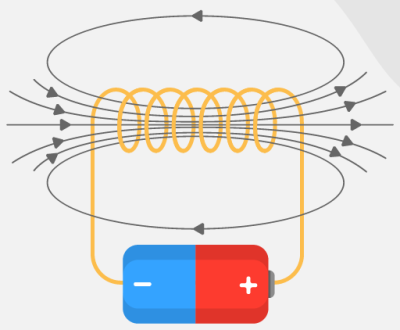Professor Hans Oersted discovered that a conductor carrying current has magnetic field associated with it in 1820.
This discovery has led scientists to always interfere magnetic field with electric fields causing development of many devices that has become very instrumental in human life. These devices includes electric motors, loud speakers, coil meter, circuit break, magnetic tapes, electric motors etc.
To investigate magnetic effect on electric current, we consider two compasses , one placed on top of a current carrying wire and the one one placed under it as shown below.

The compass is held on current conducting wire with the compass needle in line with the wire. And when the switch is closed , the compass north pole deflects as shown relative to direction of current for compass under wire.

The deflection will be as shown when current is over the wire.

When current is increased, by reduced resistance through a rheostat, the compass needle deflection increases.
Suppose now we change the direction of the current by reversing the batter polarity, the direction of the deflection is observed to change to the opposite direction as shown

When circuit is broken, the compass needle returns to it’s original position such that the north is in parallel with the wire showing no deflection.
see the figure below:

The above illustrations shows that magnetic deflection occurs only when there is current that is passing through the conductor.
This simple experiments confirms that there is association between magnetic field and electric current and that the association is dependent on number of factors like.
- Direction of current
- Direction of magnetic field
- Magnitude of the current flowing
- Strength of the magnetic field
Explanations
A flow of current is basically a flow of charge. Flowing charges has magnetic fields associated with them which can be observed when a magnetic compass is made to interact with current conducting wire.
Strength of magnetic field created by flowing current increases with increase of the flowing current which can be shown by greater deflection on a magnetic compass when current in wire is increased.
Somebody called Ampere is the one that devised a rule called Ampere’s swimming rule that physicists can use to predict direction of compass deflection when it encounters a current flowing in a wire.
The Ampere’s rule states that:
If one imagines to be swimming along a wire in the direction of the current and facing the compass needle, then the north of the needle will be deflected towards the swimmers left hand.
Related topics
Advertisements


Leave a Reply